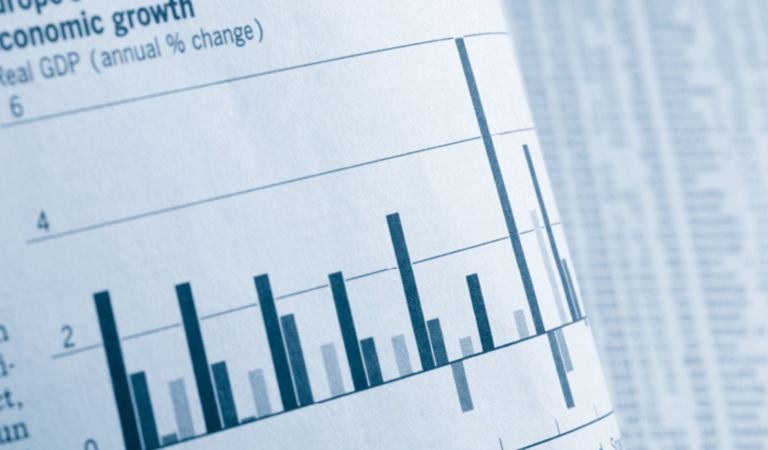Equities
Global equities (+4.7%) maintained strong upward momentum, marking the fourth consecutive month of gains. The MSCI ACWI Index surged to record highs as robust earnings from mega-cap technology companies and swelling enthusiasm for AI propelled shares sharply higher. Major global central banks kept interest rates and policy guidance unchanged amid diverging rates of economic growth and inflation across countries and regions. Softening inflation provided greater scope for global central banks to lower interest rates, although tight labor markets and persistent services inflation concerned policymakers at the US Federal Reserve (Fed) and the European Central Bank (ECB), and led financial markets to anticipate a delay in the timing of rate cuts. A draft communique from a meeting of G20 finance leaders revealed a higher likelihood of a soft landing for the global economy but also highlighted several downside risks, including escalating conflicts, geoeconomic fragmentation, rising protectionism, and further disruptions in trade routes. Persistent weakness in manufacturing continued to hinder Germany’s economy, while Japan’s economy unexpectedly slid into recession after shrinking for a second consecutive quarter due to lackluster demand. Chinese stocks surged after authorities unveiled new measures to support financial markets, including plans to expand the government’s holdings of mainland exchanged-traded funds (ETFs) and a cut in the five-year loan prime rate to a new low of 3.95%.
US
US equities (+5.3%) rose for the fourth consecutive month. The S&P 500 Index hit record highs thanks to better-than-expected fourth-quarter earnings, particularly for mega-cap technology companies, in addition to resilient economic data and greater enthusiasm about AI. Financial markets recalibrated for fewer interest-rate cuts by the Fed in 2024 and forecast that these cuts would be delayed until the summer after the core Consumer Price Index showed a sharp acceleration in services inflation in January. The surprisingly strong rise in services prices, along with solid economic growth and a robust labor market, generated greater consensus among Fed policymakers that a patient approach to policy easing is warranted and additional data is needed to provide greater confidence that inflation is moving sustainably closer to the Fed’s 2% target. Subsequently, in January, the core Personal Consumption Price Index edged lower, to 2.8% year over year from 2.9%, in line with the market’s expectations and supporting views that disinflation remains intact. Of the 99% of companies in the S&P 500 Index that had reported fourth-quarter earnings, the blended year-over-year earnings growth for the index was 4.0%, well above the estimate of 1.5% at the end of the fourth quarter and representing the second straight quarter of earnings growth. The forward 12-month price-to-earnings ratio for the index stood at 20.4.
Economic data released during the month was mixed. A reacceleration in job growth signaled that the economy remains strong enough to support a solid level of hiring. Nonfarm payrolls surged by 353,000 in January, the most in a year and well above the consensus estimate of 185,000, and payroll growth in December was revised markedly higher to 333,000. The unemployment rate remained at 3.7% for the third straight month, and initial jobless claims were modestly lower compared to the number of claims at the end of January. Consumers broadly curbed outlays on goods and services in January, easing anxiety about overheated demand. Headline retail sales slid 0.8%, well below the consensus forecast of a 0.2% decline and significantly lower than the 0.4% gain in December. Growth in personal spending slowed to 0.2%, from 0.7% in December, in line with expectations. Consumer confidence in February waned for the first time in four months as the Conference Board’s Consumer Confidence Index fell to 106.7 from a downwardly revised reading of 110.9 in January, largely reflecting a less optimistic assessment of business and labor market conditions. The housing market was supported by a decline in mortgage rates from their October highs. In January, new-home sales edged higher and existing-home sales rose by the most in nearly a year, while homebuilder sentiment in February climbed to a six-month high.
The manufacturing sector contracted more than expected, with the Institute of Supply Management (ISM) Manufacturing Index slumping to 47.8 in February, from 49.1. Employment notably declined to a seven-month low and domestic orders were weak, although company commentary across many industries revealed that sentiment was largely upbeat. A surge in employment and improved demand led to a stronger-than-anticipated rebound in the services sector in January, which expanded at the fastest pace in four months after nearly stagnating at the end of 2023. However, a surge in materials prices showed that costs rose at a faster pace, concerning policymakers. The National Federation of Independent Businesses Small Business Optimism Index registered its largest drop in more than a year amid deteriorating profits and weaker sales expectations.
Within the S&P 500 Index (+5.3%), all 11 sectors posted positive results for the period. Information technology (+6.3%) was the best-performing sector, led by semiconductors & semiconductor equipment (+17.9%). Consumer discretionary (+8.7%) outperformed, aided by broadline retail (+13.9%). Industrials (+7.2%) rose, as machinery (+6.8%) and ground transportation (+11.0%) contributed to the sector. Financials (+4.2%) also outperformed, aided by financial services (+5.1%) and banks (+4.3%). Utilities (+1.2%) and real estate (+2.6%) had the lowest impact on returns for the period.
Europe
European equities (+2.4%) rose in February. The European Commission (EC) downgraded its eurozone economic growth forecast for 2024 to 0.8%, from its previous estimate of 1.2%, as high interest rates and geopolitical tensions weigh on economic activity. However, economic growth is expected to accelerate gradually this year amid a faster-than-expected decline in inflation. The HCOB Flash Eurozone Composite PMI in February fell at the slowest rate in eight months, as stabilizing output in the services sector offset a steep downturn in manufacturing, while employment increased for the second month. Eurozone inflation continued to descend in February but was higher than expected at the headline and core levels amid a tight labor market and persistent inflation in the services sector. Headline inflation eased to 2.6% in February, from 2.8% in January, while core inflation fell more slowly to 3.1%, from 3.3%. These latest readings reinforced the European Central Bank’s (ECB’s) determination to resist pressure for imminent rate cuts, with ECB President Christine Lagarde highlighting concerns about the upward pressure on inflation from strong wage growth. Fourth-quarter earnings for companies in the STOXX 600 Index are forecast to decline by 6.5% from a year earlier.
Europe’s manufacturing sector downturn stabilized in February; the HCOB Eurozone Manufacturing PMI was broadly unchanged at 46.5 from January’s 10-month high of 46.6. Output and new orders contracted at the slowest rate in nearly a year, and factories shed jobs for the ninth successive month. Encouragingly, business confidence edged up to a 10-month high, and input costs and output prices continued to fall. Manufacturing broadly improved in the region, with the exception of Germany, where activity deteriorated at the sharpest pace in four months. The HCOB Flash Eurozone Composite PMI revealed that services sector activity stopped shrinking for the first time since July 2023. New business declined at the slowest pace since July, signaling only a marginal drop in demand, while cost growth was the highest in nine months. The EC’s Economic Sentiment Indicator decreased slightly to 95.4 in February; consumer confidence improved modestly, while industry confidence was broadly stable.
Germany’s (+4.6%) central bank predicted that the economy would continue to contract in the first quarter due to uncertainty about government policy, transport strikes, and weak consumer and industrial demand. Although the ZEW Indicator of Economic Sentiment in February reached its highest level in a year, the assessment of the current economic situation changed significantly as optimism decreased to its lowest level since June 2020. The UK (+0.7%) ended 2023 in a recession, with GDP contracting 0.3% in the fourth quarter following a 0.1% decline in the third quarter amid the strains of high borrowing costs, inflation, and strikes. Against this backdrop, the Bank of England (BOE) left interest rates unchanged. The S&P Global Flash UK PMI Composite Output Index expanded to 53.3 in February amid the most pronounced increase in business activity in nine months, helped by solid growth in the services sector. Headline inflation was steady at 4.0% in January, undershooting forecasts and fueling expectations that the BOE will begin lowering interest rates in June.
Pacific Basin
Pacific Basin equities (+4.2%) ended the month higher. In Australia (+1.0%), the Reserve Bank of Australia (RBA) pushed back on expectations for near-term interest-rate cuts, keeping rates at a 12-year high of 4.35% and signaling that further tightening remains possible. However, CPI inflation was steady at 3.4% year over year in January, below the consensus forecast of 3.6%, and core inflation declined modestly, strengthening the views that the RBA is done tightening policy and could begin to lower interest rates later this year. Treasurer Jim Chalmers warned that GDP in the fourth quarter may have shrunk for the first time since the third quarter of 2021 amid the headwinds from a softening global economy, high interest rates, and cost-of-living pressures. Other economic data signaled that the economy is continuing to slow; in January, retail sales rebounded to a modest 1.1% monthly gain after a substantial drop in December, job growth was flat and well below the consensus estimate, and the unemployment rate rose to a two-year high of 4.1%.
In Japan (+5.5%), core CPI inflation in January slowed to 2.0% year over year, from 2.3%, exceeding the consensus forecast of 1.8% and matching the Bank of Japan’s (BOJ’s) 2.0% target. Japanese wage growth strengthened less than expected in December but still showed signs of sufficient underlying momentum. Annual wage negotiations that began last month are critical to the BOJ’s assessment of whether a positive cycle of sustainable inflation and wage increases is in place, although recent inflation and wage data bolstered the probability that the BOJ will end its negative interest-rate regime in the coming months. However, BOJ leaders sent mixed signals to the market, with Governor Kazuo Ueda stating that the bank is “not yet in a position to foresee the achievement of a sustainable and stable inflation target,” and BOJ board member Hajime Takata saying that “a price target is finally coming into sight.” Amid weak domestic demand, Japan’s economy unexpectedly slipped into recession after GDP contracted at a 0.4% annualized pace in the fourth quarter, following a 3.3% slump in the third quarter. The disappointing result highlighted the country’s fragile economy and added to the uncertainty about the timing of a rate hike.
In Singapore (+1.4%), core inflation in January slowed well below estimates to 3.1%. GDP in 2023 expanded at a modest 1.1% year-over-year pace as manufacturing activity contracted and services growth slowed. GDP accelerated to 2.2% year over year in the fourth quarter, lower than the government’s forecast of 2.8% but a sharp increase from growth of 1.0% in the third quarter. In Hong Kong (+4.7%), the government eliminated measures to curb housing demand, eased mortgage rules, and will provide additional funds to support tourism as part of a sweeping plan to revive economic growth in the financial hub. New Zealand’s (+0.2%) central bank left interest rates unchanged and softened its tone on future rate hikes amid a decline in core inflation and a more balanced view of inflation risks, prompting markets to anticipate that the bank will begin lowering interest rates as soon as August.
Emerging Markets
Emerging markets (EM) equities (+5.1%) rose in February. Asia led the gains followed by Europe, the Middle East, and Africa (EMEA), and Latin America.
In Asia (+6.1%), China (+8.6%) surged after the government increased its efforts to bolster capital markets. Authorities clamped down on trading by quantitative funds; the equity arm of state-owned China Investment Corporation announced an expansion of its mainland ETF holdings; and China’s securities regulator encouraged institutions to increase their domestic holdings and advised listed companies to bolster investor confidence through share buybacks, dividends, and larger positions by major shareholders. Additionally, China’s central bank reduced its five-year loan prime rate, the benchmark for mortgages, to a new low of 3.95%, from 4.2%. Taiwan (+6.5%) was aided by booming demand for AI technology, with foreign investors continuing to fuel gains in Taiwanese stocks, notably within the semiconductor industry. The country’s Financial Supervisory Commission announced plans to finalize proposals to allow trading in active ETFs by June of 2024. India (+2.6%) advanced as investors brushed aside concerns around high valuations, upcoming elections, and regulatory uncertainty. The finance minister unveiled a final interim budget before parliamentary elections, with record spending of nearly US$134 billion on infrastructure and plans to reduce the fiscal deficit to 5.1% of GDP, from 5.8%.
EMEA (+2.8%) was led higher by Saudia Arabia (+6.6%), which generated good gains despite fourth-quarter GDP shrinking 3.7% year over year on a 16.4% decline in oil activities. Non-oil GDP grew 4.3%, and the kingdom expects non-oil growth to be above 5% in the medium term as the country aims to develop tourism and expand the private sector. South Africa (-2.7%) declined, with the rand depreciating as traders scaled back expectations for aggressive interest-rate cuts by the Fed this year. The government forecast that GDP would grow 0.6% in 2023 and estimated that it would grow by an average of 1.6% over the next three years. Poland’s (+6.4%) economic prospects improved after EC President Ursula von der Leyen said that the country could access up to €137 billion (US$148 billion) in European Union funds after the country’s new government began implementing judicial reforms to restore judicial independence.
In Latin America (+0.2%), Brazil (+0.8%) rose modestly despite concerns about higher-than-expected inflation of 4.51% in January. GDP stagnated in the fourth quarter but expanded 2.9% in 2023, defying the much lower expectations forecast in early 2023. Mexico (-3.4%) surpassed China to become the largest exporter to the United States. The country’s economy grew 3.2% in 2023, below the International Monetary Fund’s (IMF’s) forecast of 3.4%, and fourth-quarter GDP growth slowed to 0.1% compared to the third quarter. Chile (+9.5%) surged as the IMF projected the economy to grow nearly 2% in 2024 and around 2% – 2.5% in the medium term. Inflation is also expected to fall toward the central bank’s 3% target this year, which, along with a more stable political climate, could bolster the economy after stagnant economic growth in 2023.
Fixed Income
Fixed income sectors broadly outperformed government bonds on an excess returns basis, benefiting from spread tightening, while sovereign yields rose due to increasing uncertainty around policy actions by major central banks.
Some key US economic data releases were adversely impacted by winter weather, which notably drove retail sales and construction spending lower. Higher rental prices lifted annual headline inflation above consensus estimates, while consumer credit grew at the slowest pace since August’s decline. Lower mortgage rates fueled existing home sales, although a sizable portion of purchases were all-cash transactions. Housing starts sharply dropped due to weakness in the multifamily component, and building permits also decreased. The unemployment rate held steady, and nonfarm payrolls advanced more than expected. Nondurable goods and motor vehicle production fell, owing to harsh weather, weighing down industrial output. The ISM Manufacturing Index waned amid slower demand, while the ISM Services Index gained. In the eurozone, economic growth was flat in the fourth quarter, and the CPI edged down on lower energy prices. Germany’s industrial production decline was worse than expected, while factory orders were boosted by aircraft orders. The UK’s economy fell into recession in the fourth quarter, largely driven by weakness in manufacturing. China’s manufacturing PMI advanced into expansionary territory as export demand grew, and annual inflation edged lower, led by a decline in food prices. Japan’s economy slipped into recession in the fourth quarter, hit by weak consumption and lower capital spending. A sharp decline in new orders dragged the manufacturing PMI down. Canada’s unemployment fell slightly, although the number of jobs grew in the retail, financial services, and real estate sectors. Australia’s economy remained on a subtrend growth trajectory.
While most major central banks maintained a cautious stance and left policy rates unchanged, the market was closely attuned to signs of potential shifts toward policy easing, especially given robust US labor market data, which pushed back expectations of a Fed rate cut until later this year.
Most global sovereign bond yields rose, as the interest-rate outlook was clouded by central banks’ cautious stance and economic data that pointed to persistent tightness in labor markets, resilient consumer fundamentals, and sticky core inflation. US 10-year Treasury yields registered their largest monthly increase since October. Eurozone bond yields also ended higher, with markets scaling back their expectations of ECB rate cuts and data showing that underlying price growth in the bloc remained high. The UK’s yield curve steepened, led by a sell-off in longer-dated yields. In Japan, front-end yields increased amid speculation on BOJ policy normalization, while 10- and 30-year yields fell modestly. In EM, the People’s Bank of China cut its five-year loan prime rate to bolster the housing market. The Bank of Mexico held key interest rates steady but indicated it would assess the possibility of cutting rates at its next meetings. The Bloomberg TIPS Index delivered a total return of -1.07%, and the 10-year breakeven inflation rate increased by eight basis points to 2.32% during the month.
Global credit outperformed duration-equivalent government bonds as spreads tightened. Within the securitized sectors, agency mortgage-backed, commercial mortgage-backed, and asset-backed securities outperformed duration-equivalent government bonds. In EMs, local markets debt (-0.57%) underperformed external debt (0.98%), in US-dollar terms. Spread narrowing contributed positively to external debt performance, while an increase in US Treasury yields hurt results. Depreciation in EM currencies drove the negative performance within local markets, while movement in EM rates had a positive impact.
Currencies
The US dollar appreciated versus most major currencies on the back of continued strength in the US economy, sticky inflation, and the Fed’s cautious approach to rate cuts. Among the G10, the Swiss franc and Japanese yen led the losses. The Swiss franc fell to a nine-week low against the US dollar after Switzerland’s CPI slowed more than forecast. The Japanese yen remained the worst-performing major currency this year, as hedge funds wagered their largest short bets on the yen in years, testing the BOJ’s resolve to intervene. Within EM, the South African rand, Turkish lira, and Chilean peso were the notable underperformers. The South African rand was pressured lower after officials announced the 2024 national budget, with the finance minister noting plans to draw down some of the country’s gold and foreign exchange holdings to reduce debt. The Turkish lira fell to a record low as domestic inflation recorded its biggest monthly jump since last August, and the central bank governor unexpectedly resigned.
Commodities
Commodities (+0.9%) rose in February. Energy generated positive returns, while industrial metals, agriculture & livestock, and precious metals registered negative results.
Energy (+2.1%) ended the period higher. Gasoline (+6.1%) prices rose as refined products continued to outperform crude oil. The gasoline/diesel complex is expected to become even tighter due to seasonal turnarounds, exacerbated by refining outages in Russia. Crude oil (+3.3%) advanced on signs that the physical crude market is tightening. Gas oil (-0.1%) and heating oil (-1.8%) ended lower on concerns of slowing demand, while US natural gas (-12.7%) was severely pressured by ample supplies, coupled with muted demand due to mild weather.
Industrial metals (-1.2%) ended lower. Nickel (+10.1%) rallied amid speculation that the metal may be targeted by US sanctions against Russia, potentially disrupting supplies. Copper (-1.3%), aluminum (-2.6%), zinc (-4.4%), and lead (-4.6%) slid as the metals complex continued to broadly drift lower this year on concerns over demand in China and in developed economies, which are suffering the effects of tighter monetary policies and the lingering impacts of the energy crisis triggered by Russia’s invasion of Ukraine.
Precious metals (-0.3%) fell modestly as the prospect of rapid rate cuts by the Fed faded. Gold (-0.2%) and silver (-1.7%) ended lower as traders awaited clues on the Fed’s interest-rate path.
Agriculture & livestock (-0.8%) fell modestly. Cocoa (+32.1%) surged on continued anxiety about production in West Africa; Ghana cut its cocoa production forecast for the current season by as much as 24% due to smuggling and bad weather, potentially reducing output to a 14-year low in the world’s second-biggest grower. Cotton (+16.6%) soared amid ongoing production concerns in major growing countries, including China, the US, and Australia. Feeder cattle (+4.1%) and live cattle (+3.0%) were supported by tight supplies and strong demand. Additionally, fund buying and low prices for corn used for livestock feed bolstered cattle prices. Lean hogs (+2.6%) advanced on strong US domestic and export demand, despite ongoing uncertainties about the full effects of California’s Proposition 12. Coffee (-2.6%) slipped on a larger supply outlook as rainfall in Brazil’s Minas Gerais region, which accounts for about 30% of the country’s arabica crop, eased concerns about dry conditions. Wheat (-3.7%), corn (-6.4%), and soybeans (-6.8%) extended their losses as ample global supplies across the grains and oilseeds complex further weighed on prices. Sugar (-6.9%) declined on expectations of a global supply increase, as a weaker Brazilian real encouraged export sales by Brazil’s sugar producers.






























Monthly Market Review — November 2025
Continue readingBy